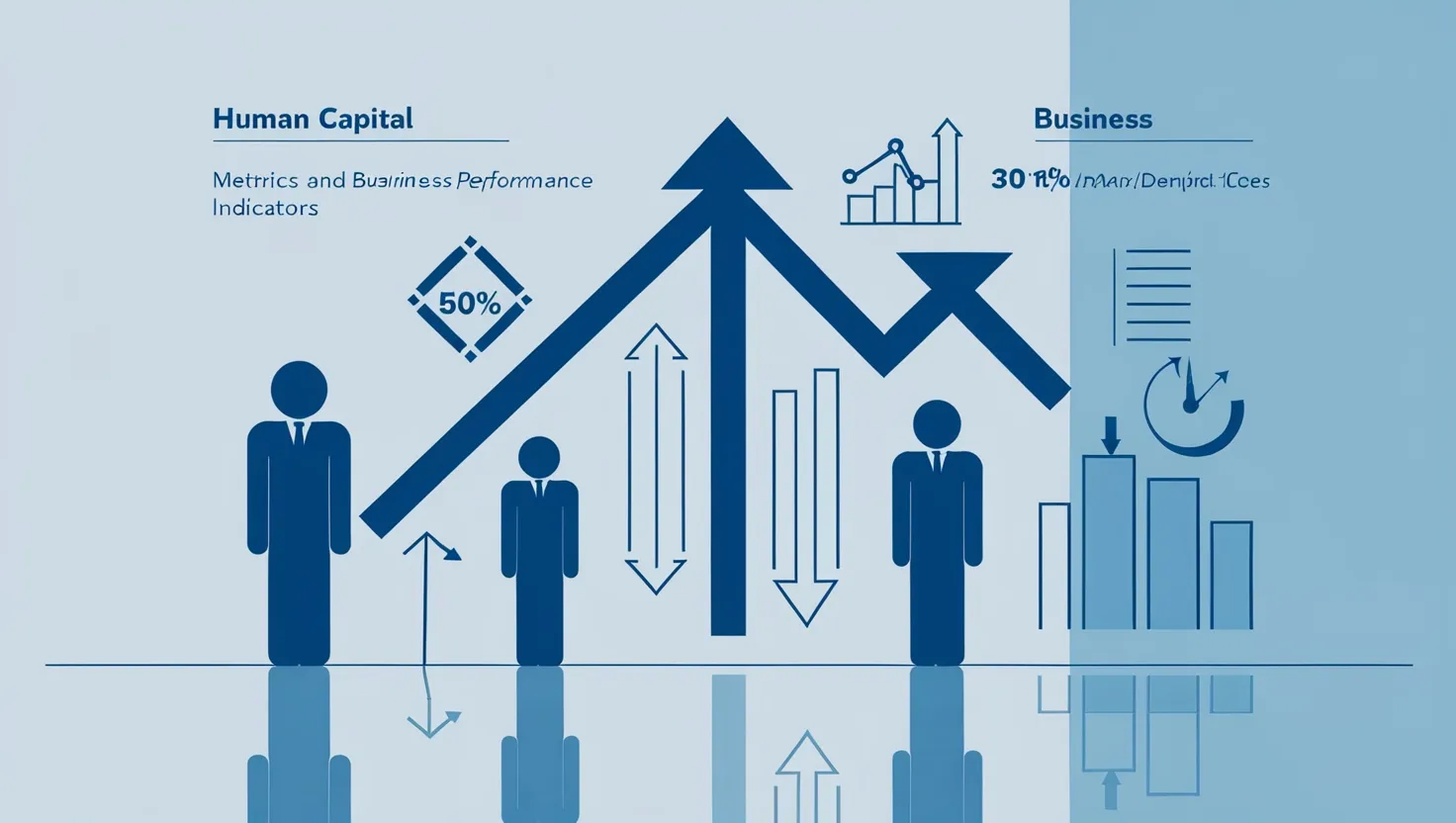In the fast-paced world of corporate innovation, measuring success has become increasingly crucial. As we step into 2024, companies are refining their approaches to tracking innovation performance, recognizing that traditional metrics alone no longer suffice. Let’s explore six key innovation metrics that are shaping the landscape this year.
First on our list is the patent-to-revenue ratio, a powerful indicator of R&D effectiveness. This metric goes beyond simply counting patents; it measures how well a company translates its intellectual property into tangible financial gains. Tech giants like Apple and Samsung have long understood the value of this metric. For instance, Apple’s patent-to-revenue ratio has consistently outperformed industry averages, reflecting its ability to commercialize innovative ideas effectively.
But how exactly do we calculate this ratio? It’s relatively straightforward: divide the number of patents granted in a given year by the total revenue for that same period. A higher ratio suggests that a company is efficiently converting its innovative ideas into marketable products or services. However, it’s essential to consider industry norms when interpreting this metric, as patent strategies can vary significantly across sectors.
“Innovation distinguishes between a leader and a follower.” - Steve Jobs
This quote from the late Apple co-founder underscores the importance of not just innovating, but doing so in a way that drives business growth. But how can we ensure that our innovation efforts are truly leading to leadership in our industries?
One way is by looking at the innovation project success rate across departments. This metric provides insights into how well different parts of an organization are contributing to overall innovation goals. It’s calculated by dividing the number of successful innovation projects by the total number of projects initiated within a specific timeframe.
Interestingly, success rates can vary widely between departments. For example, a manufacturing company might find that its engineering department has a higher success rate than its marketing team when it comes to innovation projects. This information can be invaluable for allocating resources and identifying areas for improvement.
But what constitutes a “successful” innovation project? The definition can vary depending on the company and industry, but generally, it involves meeting predetermined goals related to factors such as revenue generation, cost savings, or market share gains.
Time from idea generation to market launch is another critical metric gaining traction in 2024. In today’s rapidly evolving markets, speed can be a significant competitive advantage. Companies that can quickly turn ideas into marketable products or services often gain a first-mover advantage.
To calculate this metric, track the time it takes for an idea to move through various stages of development until it reaches the market. Many companies are now using project management software to automate this process, providing real-time insights into their innovation pipeline.
Take Tesla, for example. The electric vehicle manufacturer has consistently outpaced traditional automakers in bringing new features and models to market. This agility has been a key factor in Tesla’s rapid growth and market dominance in the EV sector.
But speed isn’t everything. How can companies ensure that their rapid innovation doesn’t come at the cost of quality or employee well-being?
This brings us to our fourth metric: the cross-functional collaboration score. Innovation rarely happens in silos; it often requires input from various departments and disciplines. This metric aims to quantify how well different teams work together on innovation projects.
There are several ways to measure cross-functional collaboration. Some companies use surveys to gauge employee perceptions of interdepartmental cooperation. Others track the number of joint projects or the frequency of cross-departmental meetings. Advanced analytics tools can even analyze communication patterns to identify collaboration hotspots and bottlenecks.
Google, known for its innovative culture, has long emphasized the importance of cross-functional collaboration. The tech giant’s “20% time” policy, which allows employees to spend a portion of their work week on projects outside their core responsibilities, has led to the development of successful products like Gmail and Google News.
“The best way to have a good idea is to have lots of ideas.” - Linus Pauling
This quote from the Nobel Prize-winning chemist highlights the importance of fostering a culture where everyone feels empowered to contribute ideas. But how can we measure the extent to which employees are actively participating in innovation efforts?
Enter our fifth metric: the employee innovation participation rate. This metric tracks the percentage of employees who actively contribute to innovation initiatives. It can be calculated by dividing the number of employees who have submitted ideas, participated in innovation workshops, or contributed to innovation projects by the total number of employees.
Companies like 3M have set ambitious targets for this metric. The manufacturing giant aims to have 30% of its revenue come from products introduced in the past five years, a goal that requires widespread employee participation in innovation efforts.
To boost this metric, many organizations are implementing idea management systems, hosting innovation challenges, and creating dedicated innovation teams. But it’s crucial to remember that participation alone isn’t enough; the quality of ideas and their potential impact on the business are equally important.
This brings us to our final metric: Return on Innovation Investment (ROII). This comprehensive metric aims to quantify the overall impact of innovation efforts on a company’s bottom line. It’s calculated by dividing the financial returns from innovation projects by the total investment in innovation over a specific period.
ROII can be challenging to measure accurately, as it requires tracking both direct and indirect costs associated with innovation, as well as attributing revenue to specific innovation initiatives. However, when done correctly, it provides a powerful tool for justifying innovation budgets and guiding strategic decisions.
Procter & Gamble, a company known for its commitment to innovation, has used ROII to drive its new product development strategy. By focusing on innovations with the highest potential returns, P&G has maintained its position as a leader in the consumer goods industry.
“Innovation is the ability to see change as an opportunity - not a threat.” - Steve Jobs
As we reflect on these six metrics, it’s clear that measuring innovation is not a one-size-fits-all endeavor. Each company must tailor its approach based on its unique goals, industry, and organizational structure. The key is to choose metrics that align with overall business objectives and provide actionable insights.
Moreover, it’s crucial to remember that these metrics are tools, not ends in themselves. The ultimate goal is to foster a culture of continuous innovation that drives sustainable growth and creates value for customers and stakeholders.
As we navigate the complex landscape of corporate innovation in 2024, these metrics offer a compass to guide our efforts. But the journey doesn’t end here. The field of innovation measurement is itself constantly evolving, with new metrics and methodologies emerging all the time.
What new metrics might we see in the coming years? How will advancements in artificial intelligence and data analytics shape the way we measure and manage innovation? These are questions that forward-thinking companies will need to grapple with as they strive to stay ahead in an increasingly competitive global marketplace.
In conclusion, the six metrics we’ve explored - patent-to-revenue ratio, innovation project success rate, time to market, cross-functional collaboration score, employee innovation participation rate, and return on innovation investment - offer a comprehensive framework for assessing innovation performance in 2024. By leveraging these metrics, companies can gain valuable insights into their innovation processes, identify areas for improvement, and ultimately drive sustainable growth through innovation.
As we look to the future, one thing is clear: the ability to effectively measure and manage innovation will be a key differentiator for successful companies. Those who can master this art will be well-positioned to thrive in an ever-changing business landscape. After all, in the words of management guru Peter Drucker, “If you can’t measure it, you can’t improve it.”





